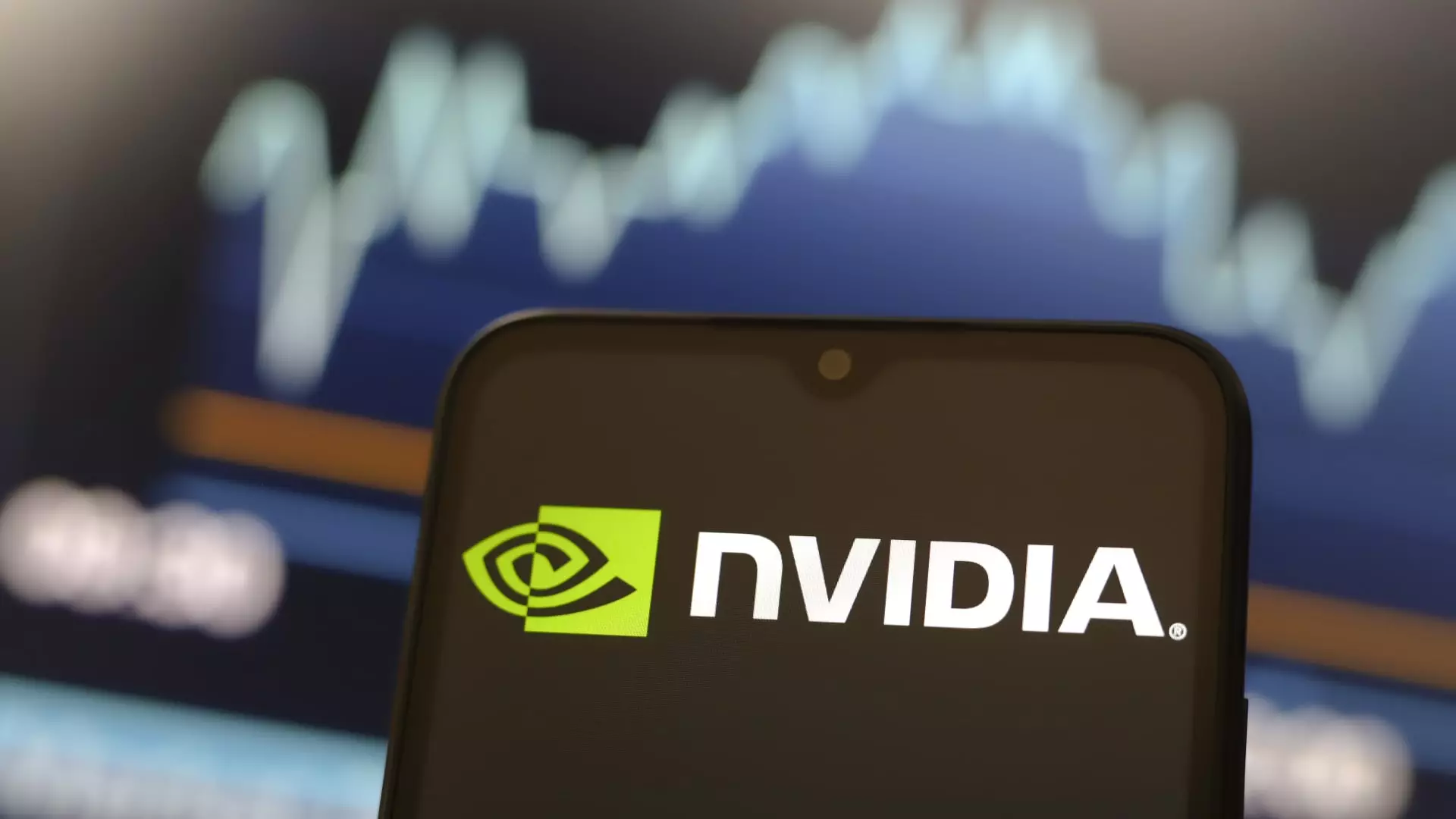The semiconductor industry has long been a cornerstone of technological innovation, with companies like Nvidia often seen as bellwethers for broader market trends. However, recent market movements present a contradictory narrative. While Nvidia’s shares have entered correction territory, the Nasdaq Composite is soaring to unprecedented heights. This divergence raises important questions about the dynamics within the tech sector and the future trajectory of Nvidia amidst a rapidly evolving landscape.
Nvidia’s stock, after an impressive ascent—boasting a staggering 166% increase this year—has encountered turbulence in December, dropping 4.5%. The current market situation sees Nvidia’s shares down approximately 11% from their peak of $148.88 just a month prior. A standard definition for a market correction states that it occurs when stocks fall by at least 10% from their highest closing price. Thus, Nvidia’s recent performance qualifies as a correction, eliciting concern among investors and analysts alike.
Despite its prior successes, including significant demand generated by AI and data center needs driven by the launch of major applications like ChatGPT, Nvidia’s decline might signal a more complex market reality. Keith Lerner, co-chief investment officer at Truist, suggested that while Nvidia remains essential for AI chips, investors seem to be redistributing their focus within the stocks of high-performing entities, a phenomenon often referred to as rotation.
The observed decrease in Nvidia shares could be emblematic of profit-taking behavior among investors after a banner year. Market participants may be recalibrating their portfolios, seeking to lock in gains while simultaneously exploring other burgeoning opportunities within the tech sector. As the market generally continues to reach new highs, Nvidia’s parallel underperformance stands in stark contrast, posing potential red flags that warrant scrutiny.
Recent commentary from Roth MKM identifies a crucial price range for Nvidia between $125 and $130, signifying an important juncture for both the stock and potentially the overall market sentiment. Such technical analysis suggests that market movements ahead will be closely watched, particularly regarding Nvidia’s volatility against its peers.
Interestingly, as Nvidia grapples with its correction, other semiconductor manufacturers are enjoying a prosperous period. For instance, Broadcom’s shares skyrocketed by 11% on a day when the Nasdaq Composite ascended to new heights without Nvidia’s support, emphasizing a broader trend favoring alternative growth stocks. Following a robust earnings report, Broadcom has not only surged in stock prices but also crossed the $1 trillion market capitalization threshold.
The shifting market interests point to a critical observation made by Kim Forrest, chief investment officer at Bokeh Capital Partners, highlighting that momentum investors are increasingly gravitating toward companies promising faster growth. Such competitive dynamics underscore a reality where Nvidia may not hold the monopoly on market attention within the semiconductor sector.
In a parallel movement, other semiconductor stocks have also enjoyed favorable gains. For example, Micron Technology saw an increase of about 6% in anticipation of its quarterly results, reflecting investor confidence in broader technology trends. Other companies like Marvell Technology and Lam Research followed suit, each experiencing respectable gains that underscore the spirited competition within the industry.
As Nvidia navigates its current challenges, the question looms large: what lies ahead for this tech giant? With increasing pressure from competitors and a market landscape that appears to favor diversification among semiconductor stocks, Nvidia must adapt. Future developments within the AI sector, as well as shifts in investor sentiment, will significantly influence Nvidia’s trajectory.
While the current downturn for Nvidia may be indicative of a necessary correction, it also opens avenues for exploration regarding growth potential within the semiconductor arena. The parallel successes of other tech companies signal that the market remains vibrant; Nvidia must leverage its strengths while remaining agile in the face of evolving trends to reclaim its position at the forefront of the semiconductor evolution.

